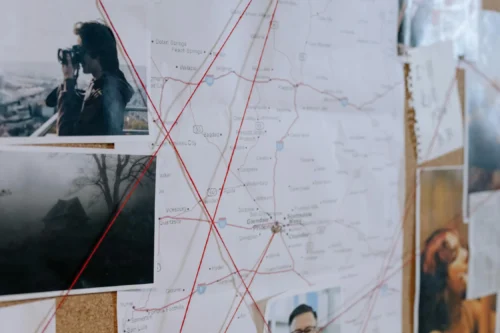Image courtesy of Pexels.
“Is someone following me?”, “Is there someone behind me?”, or even “Is there a monster in my closet?” are all familiar worries. Yet, for some people, paranoid thoughts and tendencies take a far larger role in life than a passing moment of anxiety. They can cause lasting delusions and influence relationships, often pairing with other symptoms within conditions like schizophrenia or bipolar disorder. A new Yale study has even investigated paranoia’s ability to shape something as basic as sensory perception.
Paranoia can be described as the incorrect belief that others are intentionally attempting to cause you harm. In 2020, Santiago Castiello, a PhD student focusing on schizophrenia at Oxford University, became interested in paranoia within schizophrenia. He reached out to Philip Corlett, an assistant professor of psychiatry at the Yale School of Medicine, to see if they could work on a project together. Simultaneously, Joan Ongchoco, a postdoctoral student in Corlett’s lab, was studying a different phenomenon: teleological thinking, which is when someone ascribes too much purpose to an unintentional event. Common manifestations of teleological thinking occur when people construct conspiracy theories or believe that their own thoughts are being fed to them by outsiders. Little did Castiello, Corlet, and Ongchoco know that their work would culminate in a single surprising project.
Both paranoia and teleological thinking are associated with delusions, but the mechanism for these thoughts is still not largely understood. For example, delusions might stem from properly perceiving the world around us but interpreting a collection of events or details as harmful when someone with lower paranoia would not interpret them as harmful. Alternatively, people with delusions may experience changes in perception that subsequently alter information about events and details, which are then interpreted the same way as a non-paranoid person would. In other words, delusions may come from altered interpretation of conventional information or altered information interpreted in a conventional manner.
In December 2024, Castiello, working with Ongchoco, Corlett, and other researchers, took one approach to understanding this phenomenon by examining social hallucinations through a “sheep and wolf” task. In the task, participants watched dots moving on a screen and had to decide whether one dot was chasing the other, and which dot was the chaser “wolf” and which was the “sheep” being chased.
The researchers found that people with high paranoia and high teleology perceive chasing when no chasing is actually occurring—they consistently perceive agency when only random motion is occurring. The researchers characterized this perceived chasing when only random motion exists as a “social hallucination,” reflecting a perception-based problem in daily life that may manifest in the belief that one is being watched or controlled. These results showed that paranoia and teleological thinking affect raw visual perception, with deviations from normal thought being influenced by this altered perception.
When the researchers looked more closely, they additionally found that highly paranoid people were worse than others at identifying the experiment’s sheep. Combined with the inability to differentiate between random and chasing motion, the inability to identify who is being chased could lead one with high paranoia to believe that others are chasing a target and wrongly identifying that the target is oneself.
On the other hand, highly teleologically thinking people were worse than normal at identifying the wolves. “Imagine believing that the CIA is pursuing you, but you’re bad at detecting who the CIA officers are,” Castiello said. Anybody you meet could be an agent.
Castiello’s results are promising for clinical diagnoses. Castiello is hoping to determine the rate of false alarms with high confidence that can accurately predict whether a patient has paranoid or teleological thinking tendencies. Once this process is streamlined, you may be able to play a game choosing sheep or wolves instead of a strenuous psychological evaluation to be assessed for high paranoia and teleology.
Outside of the clinic, this work also has interesting implications in faith. “It might be that the more spiritual events someone experiences, the more agency they perceive in the world to increasing degrees. Or the difference between someone spiritual and someone not spiritual may cause a categorical difference in their teleological thinking,” Castiello explained. His work raises questions of whether higher teleological thinking can be induced through faith. Perhaps, if teleology can be learned, it can be unlearned. This is a broad extrapolation from the work that has thus far been done, but … do you follow?

